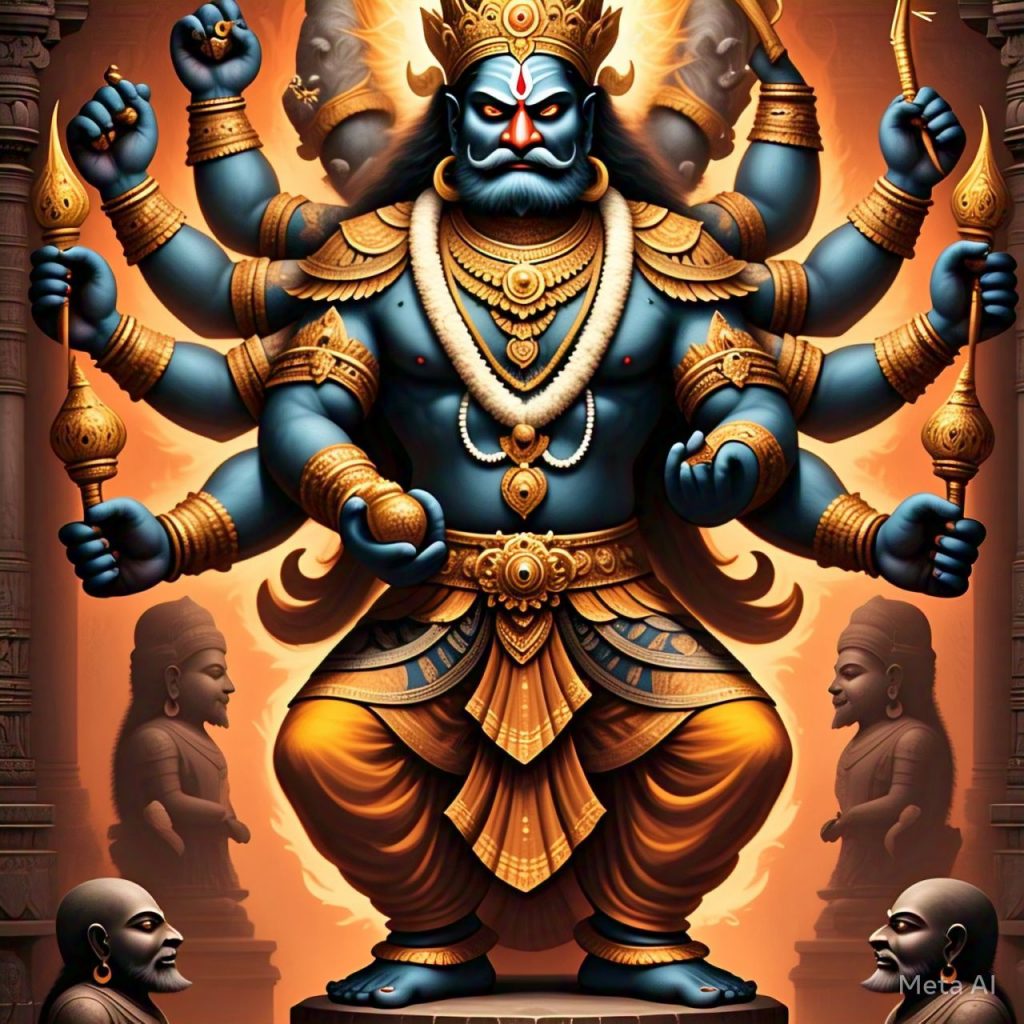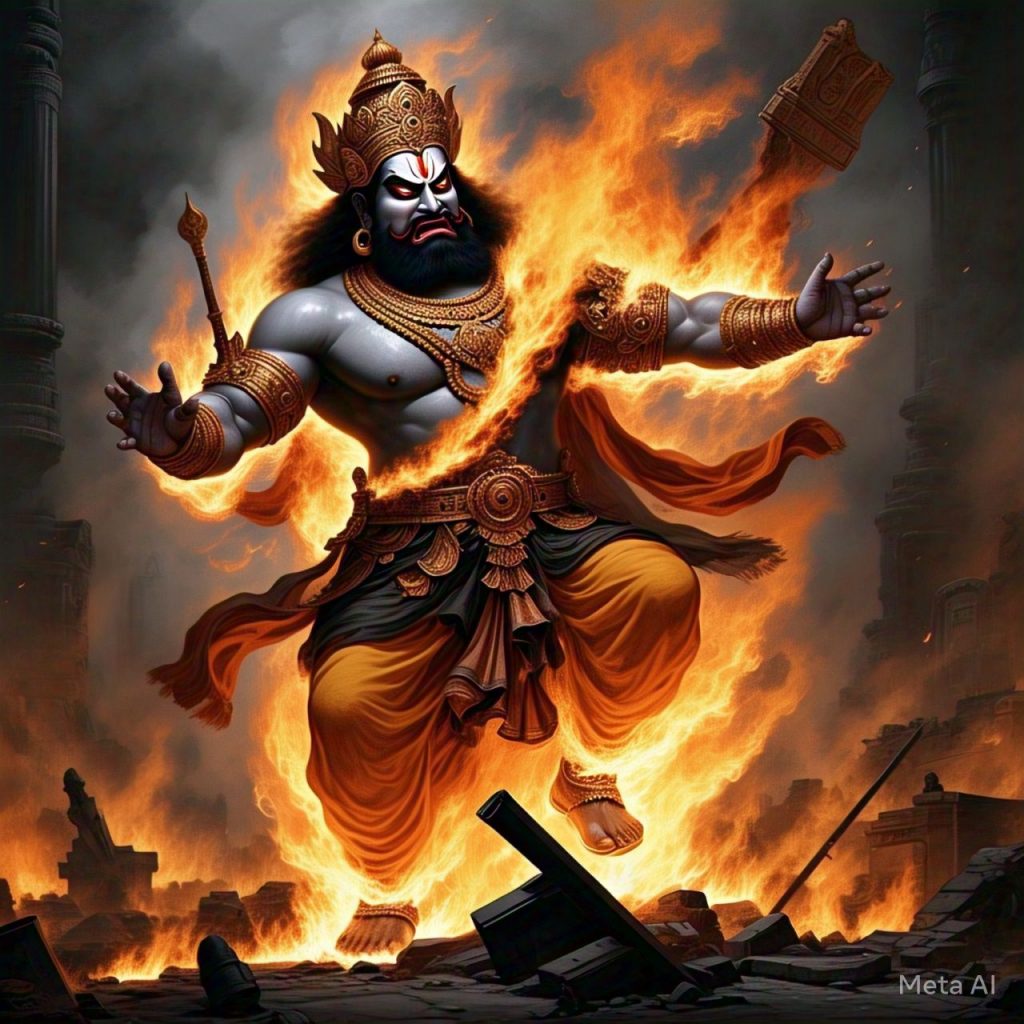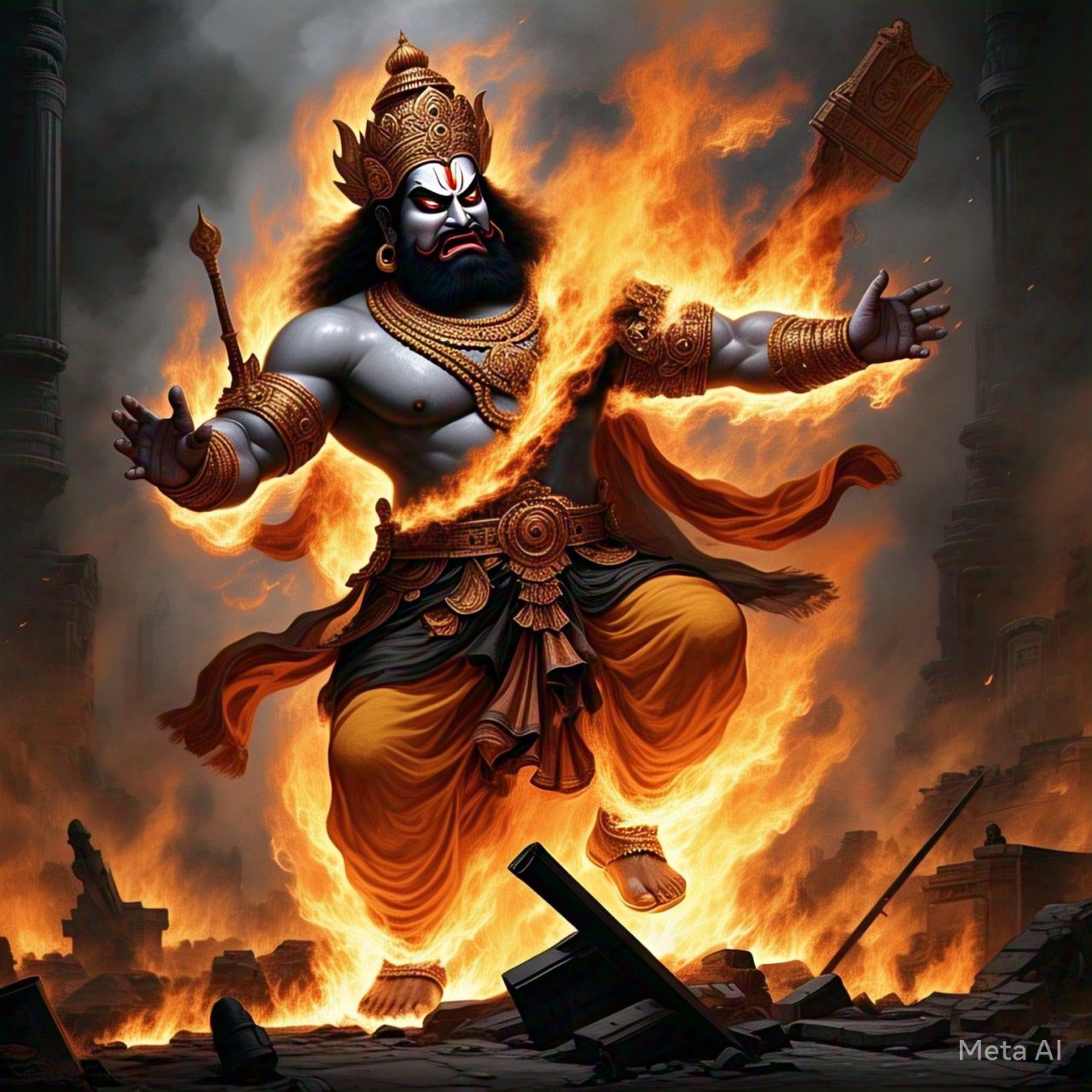Dussehra, also known as Vijayadashami, is one of the most significant Hindu festivals in India. Celebrated at the end of the nine-day Navratri, Dussehra marks the triumph of good over evil.
The festival is rooted in two powerful mythological stories:
- Lord Rama’s victory over the demon king Ravana, symbolizing the victory of dharma (righteousness) over adharma (evil).
- Goddess Durga’s triumph over Mahishasura, the buffalo demon, representing the power of the divine feminine.

As the autumn wind starts to whisper among the rustling leaves, and the skies are colored in shades of gold and orange, something inside me awakens. There’s a certain energy in the air, the kind that makes your heart a little lighter and your spirit a little stronger. It’s that time again—Dussehra. A festival that’s not just about Ram’s triumph over Ravan, but also about every little battle we wage within ourselves.
As kids, Dussehra was always about vibrant fairs, crackling jalebis, and Ravan effigies being engulfed by fire as fireworks lit the night sky. However, as I grew up, I realized that it’s so much more than the fireworks. It’s good vs evil—yes. Still, whose evil? Whose good? Eventually, I figured it out… the greatest war is the one we wage within.
The Epic Battles That Inspire Dussehra
We’ve all heard the story—Lord Ram, the very embodiment of dharma, battles the ten-headed demon king Ravan to save Sita. Sounds like a story of sword battles, arrows flying in mid-air, and divine chariots. “In truth, scratch beneath the surface, and you’ll find a deeply human story.”
Indeed, Ram symbolizes every one of us who chooses to stand by our values, even when tested by the world And Ravan? He is not the bad guy alone. He is our pride, our rage, our jealousy, our ego—the ten heads of Ravan are not metaphorical. They’re real. They reside within us.
And when Dussehra arrives every year, it’s the world asking in a hushed tone: “Have you identified your Ravan?
“Dussehra and the Inner War Against Evil”
I’ve had days where I felt utterly vanquished. “Fear held me back. So did the endless thoughts. And the people who never really understood me.”There were wars that made no open wounds but shattered me beyond words.
But each time, somehow, Dussehra used to arrive, and I’d remain seated before the burning effigy and think—perhaps it’s time to let go of it all. Perhaps this time, I lit fire to my self-doubt. Perhaps this time, I believe I can.
And I’ve seen that in others too. Friends letting go of toxic relationships. Mothers finding strength to chase their forgotten dreams. Little kids learning to stand up for themselves. We’re all fighting. Quietly. Fiercely.
How India Celebrates Dussehra

- Ramlila Performances: “Open-air Ramlila performances bring the life of Lord Rama to the stage.”Communities come together to relive the epic Ramayana through music, drama, and devotion
- Effigy Burning: “Crowds gather as organizers ignite towering Ravana effigies packed with fireworks.”
“Consequently, the sight of fireworks lighting up the sky becomes a dramatic and symbolic moment.”
- Durga Visarjan: In Bengal and other eastern states, elaborately crafted Durga idols are immersed in rivers and lakes with chants of “Asche Bochor Abar Hobe” (She will return next year).
- Festive Feasts & Fairs: From sweet treats like jalebis and laddoos to grand melas (fairs) with swings, games, and stalls, Dussehra brings people of all ages together in joy.
Dussehra Across the Globe:How Other Nations Celebrate the Triumph of Good Over Evil
- Nepal – For 15 days, family members gather together, houses are purified and adorned, and the elderly members bless the younger ones with tika (a combination of rice, yogurt, and vermilion) and jamara (sacred barley grass). It’s not a celebration—it’s reunion, respect, and spiritual rejuvenation.
- Bangladesh – – Dussehra coincides with the final day of Durga Puja. Communities beautifully decorate pandals, and traditional dances and cultural events become the heart of the celebration. On Vijaya Dashami, devotees immerse idols of Goddess Durga in rivers while chanting, “Bolo Durga Mai Ki Jai!”
- Sri Lanka – Interestingly, Sri Lanka—the country often identified with Ravana in the Ramayana—offers a distinct cultural connection with Dussehra.
- Indonesia – The Balinese Hindus mark Dussehra with traditional performances such as wayang kulit (shadow puppetry), and Ramayana dance-dramas at temples.
- 5. Mauritius – In Mauritius, where a large Indian diaspora thrives, Hindu festivals are celebrated with heartfelt joy. During Dussehra, communities organize Ram Leela shows at temples. Devotees visit each other’s homes, following the same traditions their ancestors brought with them when they first arrived on the island.
